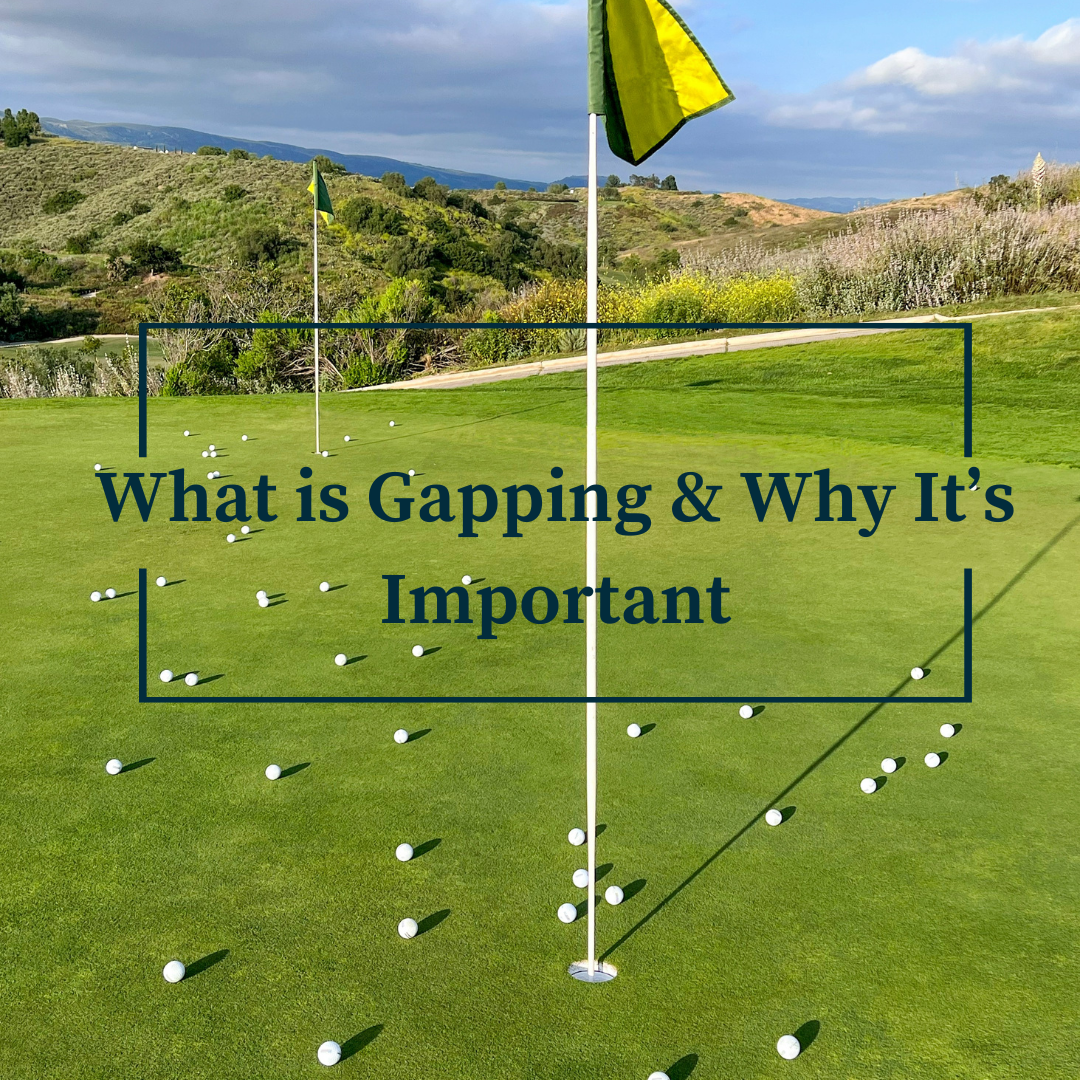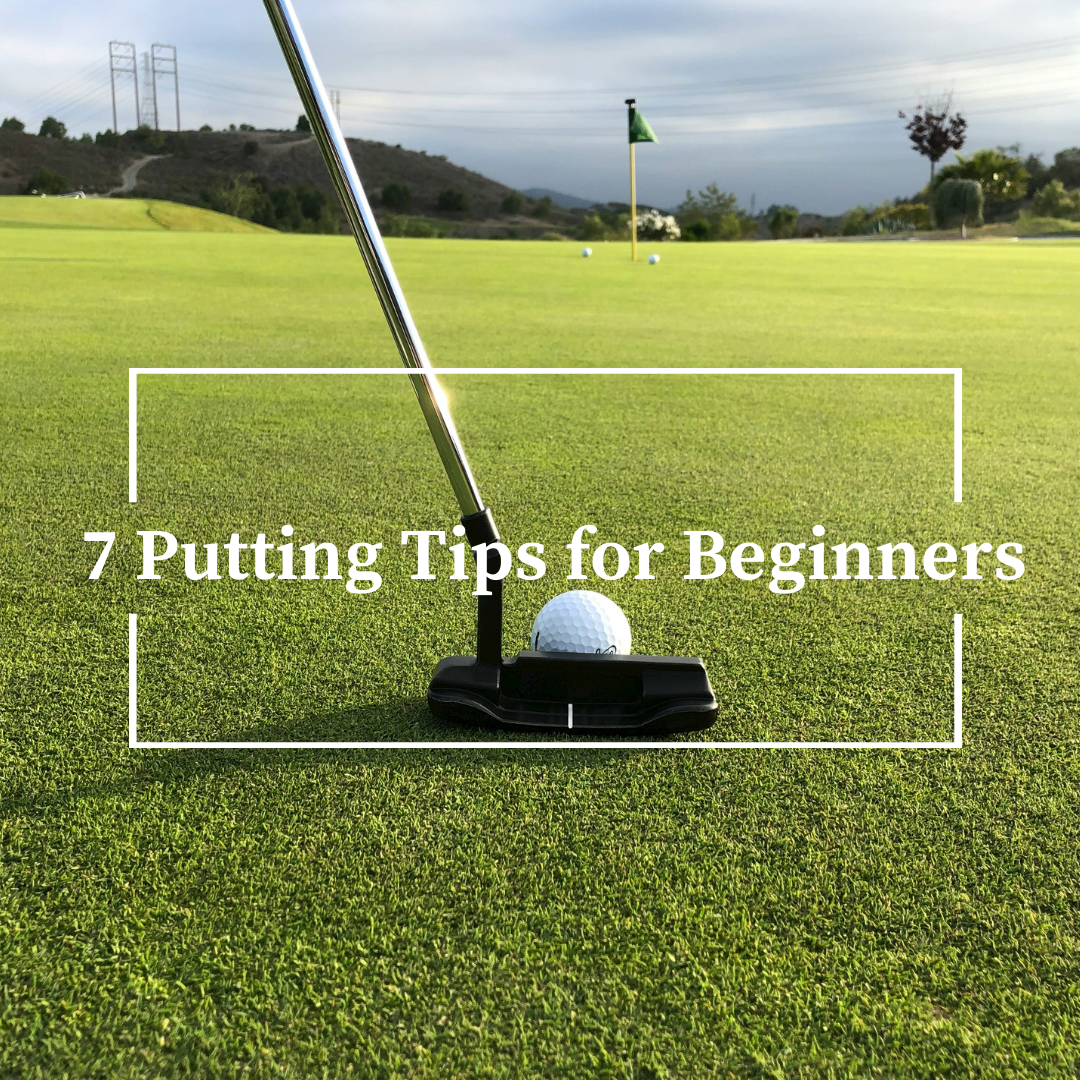Are you starting to play golf? Here are 14 basic golf rules beginners need to know before playing a round of golf
I have been playing golf for over 20 years. I appreciate it can be confusing for someone starting out in the game to understand and interpret the rules. As you face the different situations on a golf course.
By better understanding the rules it enables a more enjoyable time for all. It can become frustrating when you are playing with others who are not following the rules. An unwritten rule in golf is that all players are honest, and you hold yourself to account by playing to the rules.
Golf is great fun and to make it even more enjoyable, keep reading to find out the basic golf rules you need to be aware of.
- The 14 Club Rule
- Playing within the Tee Box
- Order of Play
- Striking the Ball
- Playing the ball as it Lies
- Taking Free Relief
- Ball Lost or Out of Bounds
- Unplayable Ball
- Understanding Penalty Areas
- Bunkers
- Marking your Golf Ball
- The 10 Second Rule
- Keeping the Flagstick in
- Seeking Advice from Other Players
The Course
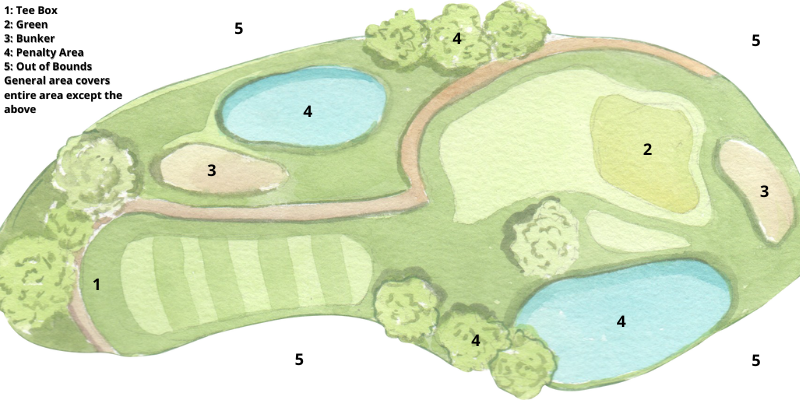
There are five areas of golf course:
- Teeing Area: where you start to play the hole
- Putting Green: where you complete the hole
- Bunkers: are specially prepared areas of sand
- Penalty Areas: is where the ball is unplayable such as bodies of water
- Out of Bounds: is where the ball is outside the boundary edge of the golf course
All the other areas of a course is the general area, such as the fairway and rough
Before Starting the Round
You should become familiar with the local rules specific to the course you are playing. The way you can do that is either by checking the noticeboard or the easier way of looking at the scorecard.
It is a good idea to mark your ball and tell your playing partners what ball you are playing with. This makes your ball identifiable to you and your playing partners.
1. The 14 Club Rule
You can carry a maximum of 14 clubs in your golf bag. You can choose a combination of what clubs to bring. If you have more than 14 golf clubs in your golf bag you will receive a two-stroke penalty for every hole. You can bring less than 14 clubs if you like, but I would not recommend this as golf is already hard enough.
Playing the Hole
2. Playing within the Tee Box
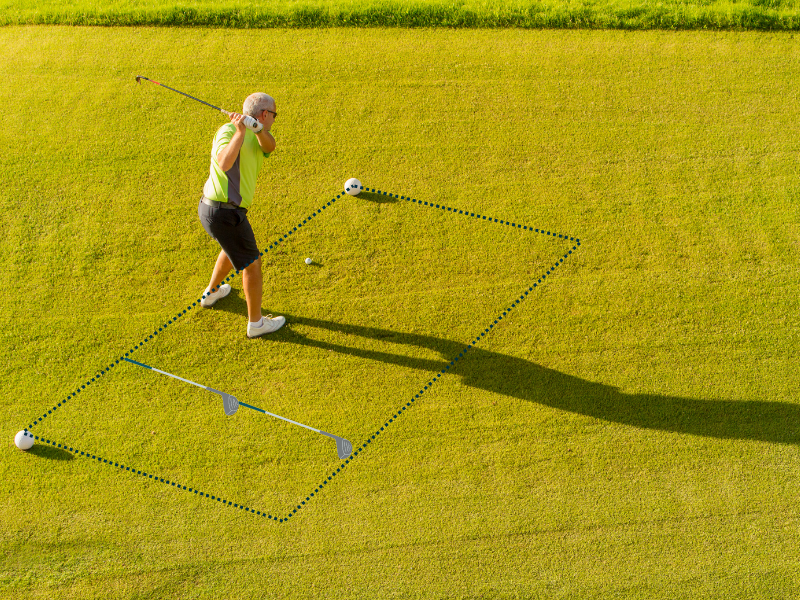
You can play a shot anywhere within the tee box. The tee box is a rectangle of two club lengths back from the tee markers. If you do not play within the tee box, you will receive a two-stroke penalty and must play the ball within the tee box. As any shots outside the tee box do not count.
NOTE: Your ball only needs to be in the tee box, your feet can be outside the tee box. This may help to open the fairway for your shot.
Some other good things to know when you are playing from the tee box:
- If the ball falls off the tee, like a gust of wind pushes it off, it does not count as a shot
- If you are having a practice swing and you accidentally hit the ball off the tee, pick up the ball and put it back on the tee. There is no penalty stroke.
- If you are attempting to hit the ball and you swing and miss the ball, this counts as a stroke. Your next shot will be your second shot.
- The player with the lowest score from the previous hole will tee off first. Unless you are playing ready golf
3. Order of Play
The ball farthest away from the hole determines who will play first. Unless you are playing ready golf, which means each golfer within the group hits when ready. This helps the speed of the game and can apply for all areas of the course, such as the tee box, the general area and the green.
4. Striking the Ball
You must hit the ball with the head of your club. You cannot scoop, scrape, or push the ball.
If you intend to strike the ball and miss it, this counts as a stroke. If you accidentally hit the ball more than once during your shot, this counts as one stroke.
5. Playing the ball as it Lies & Playing the Course as you find it
Wherever the ball comes to rest, you must play the ball from that spot. Like many, I know I have, our swing or the line of the shot is being hindered by branches, shrubs, or moveable objects.
You are not allowed to improve your situation around the ball such as breaking branches, removing shrubs or obstructions that are in your line of shot or impede your swing.
This is playing the course as you find it. You must accept the conditions that affect your shot and not improve the conditions before playing the ball.
6. Taking Free Relief
There are a few situations when free relief can be taken. These situations are if your ball comes to rest on a cart path, in temporary water, ground under repair or specific rules in place from the course. Please check the scorecard for specific course free relief rules.
You can move the ball without a penalty stroke. Make sure you tell your playing partner what you are doing, before picking up and moving your ball.
Once you have found your nearest point of relief, put a tee in the ground to mark the spot. Then take a club (your driver, as it is the longest club in your bag), and you can drop within one club length. The only thing you cannot do is drop the ball closer to the hole.
Some things to consider when dropping the ball:
- Drop the ball straight down from knee height
- The ball must land and remain in the relief area
- The ball must not touch your body or equipment when you drop the ball
- If after 2 drops, the ball continues to roll outside of the relief area or hazard. Place the ball on the spot it landed where you dropped it last.
7. Ball Lost or Out of Bounds
If you have hit a shot and you think that it is lost or has gone out of bounds, the best thing to do next is hit a “provisional ball”. Make sure you tell your playing partners that you are hitting a provisional ball. Then you can go look for your original ball. If you find your original ball, you can then go and pick up your provisional ball. There is no stroke penalty for hitting a provisional ball and it speeds up the play.
If you have lost your ball, you have 3 minutes from the time you start searching for your ball before it is a lost ball.
In both situations of a lost ball and hitting the ball out of bounds you will take penalty relief by adding one penalty stroke. You will hit where the previous shot was taken from.
For the definition of Out of Bounds: the whole ball must be outside the boundary edge, if it touches the boundary edge your ball is still inbounds. Your feet can be out of bounds while playing the ball.
8. Unplayable Ball
From time to time your ball will come to rest in an area that is unplayable, which means you cannot play the ball as it lies. If this happens you will receive a one stroke penalty. To drop the ball there are a few options:
- Two club Lengths: you may drop within two club lengths where your ball lay in any direction. As long as your ball is no closer to the hole.
- Line of sight: you may drop back on the line of your ball as far as you would like. By keeping the spot where your ball lay between you and the flag in the hole. You may go back and drop the ball 10 feet or 50 yards, whatever you think to have the shot. When dropping the ball, it must not be closer to the hole.
- Replay your previous shot: go back to where you played your last shot and hit from there. This should be your last option as you are giving up distance.
9. Understanding Penalty Areas
It is never fun to hit your ball into a penalty area such as water or other areas on the course marked by yellow or red stakes and/or lines. But it happens to all and the best of us from time to time. All relief options come with a one stroke penalty.
What you need to know when you hit your ball into the penalty area (yellow and red):
| Yellow | Red |
| Line of Sight: go back on the line of where your ball last crossed the edge of the penalty area (for example, the water) between you and the hole. | Line of Sight: go back on the line of where your ball last crossed the edge of the penalty area (for example, the water) between you and the hole. |
| Replay Previous Shot: Go back to where you played your last shot and hit from there. | Lateral Relief: drop the ball within two club lengths where your ball last crossed the edge of the penalty area (for example, the water). No closer to the hole |
| Replay Previous Shot: Go back to where you played your last shot and hit from there. |
10. Bunkers
Bunkers are never fun to be in, for me anyway. If you do find yourself in a bunker, there are certain things you need to be aware of to avoid an unnecessary penalty stroke:
Do not ground your club when you are taking your shot, including when you are taking practice swings as well. If you accidentally touch the sand with your club whilst walking in the bunker, there is no penalty stroke.
You can move loose impediments like stones and leaves from the bunker.
On The Green
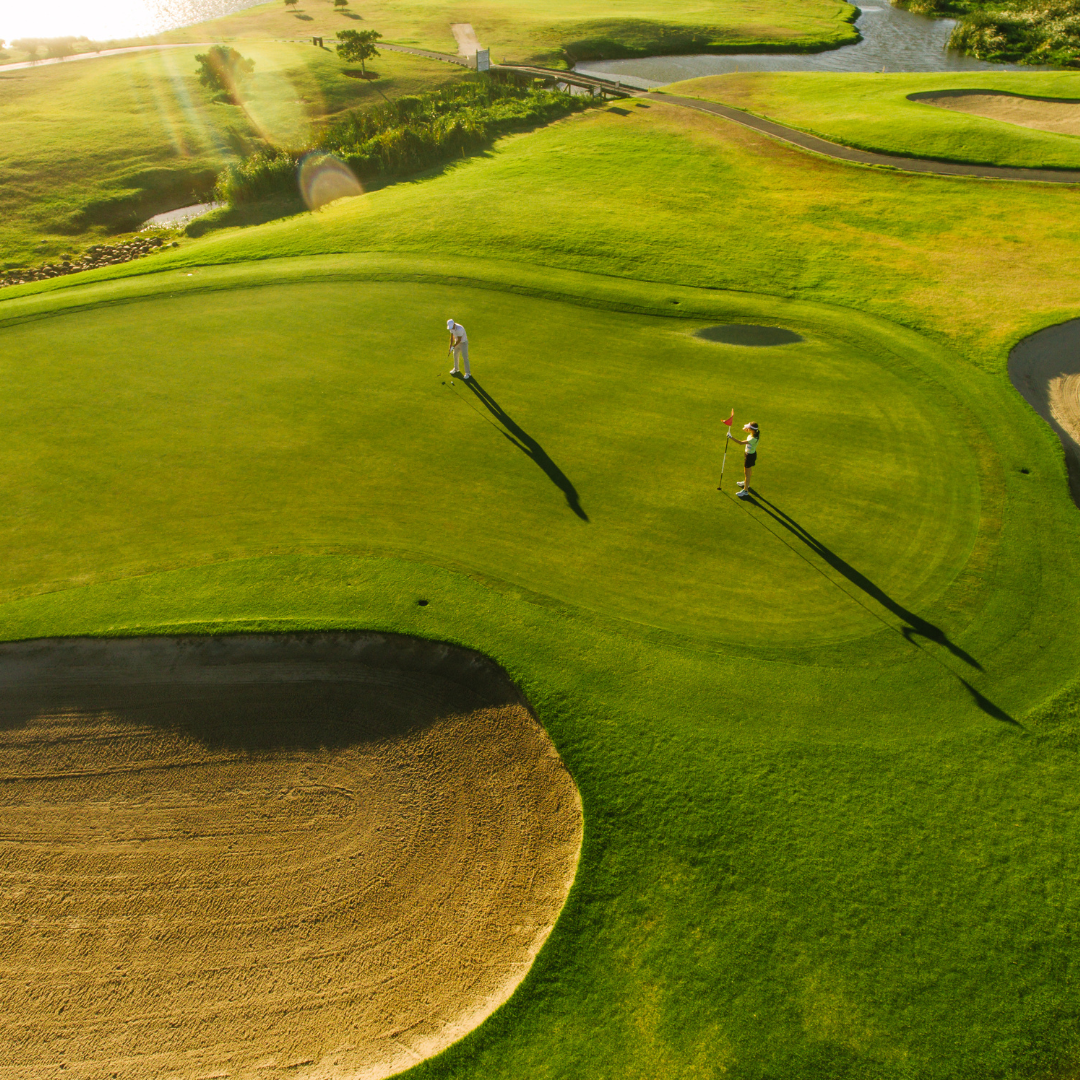
11. Marking your Golf Ball
Once your ball is on the green you can mark your ball. You do this by placing a ball marker or coin behind or next to the ball. Make sure your ball is on the green before marking it, you are not able to mark the ball on the fringe.
Once you have marked the ball you can then lift the ball and clean it before placing it down again to take your putt.
If your marker is in the line of another player, you can move your marker, if your playing partner tells you to do so. To do so take instructions from your partner on what way to move it (you can only move right or left of your marker).
Take your putter head as the measurement (can also be the grip of the club or entire club) and place the ball marker at the end of the putter head.
Make sure you move the marker back to its original spot before putting your ball.
You can move impediments like stones or leaves or repair ball divots that are in your putting line.
12. The 10 Second Rule
When you are putting the ball rests at the edge of the hole. You can leave it for 10 seconds to see if the ball goes into the hole.
13. Keeping the Flagstick in
In recent years you can keep the flagstick in whilst putting. It is your preference if you want to have it in or out.
Tip: when you are on the green be aware of other balls to make sure you are not stepping on their putting line. This is a big no no!!
14. Seeking Advice from Other Players
As we are starting out, we want to ask others on what shot to hit or club to use or what line to take for a putt. This is a one stroke penalty if you are playing competitively. I am sure it will be fine if you play a casual round with friends.
Final Thoughts
Now you understand the rules of golf, to assist in progressing your game, check out our comprehensive guide on How to Play Golf.
If you are still looking for more help with the rules, check out the rules of golf pocket guide for your bag. This is an easy reference rules guide when you are on the course.

